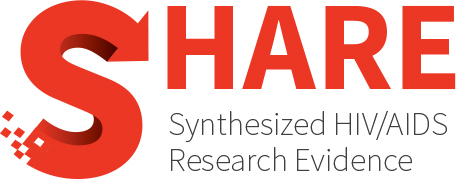Category Archives: Drug use behaviours/harm reduction
HIV risk inside U.S. prisons: A systematic review of risk reduction interventions conducted in U.S. prisons
HIV prevalence in correctional populations is approximately five times that of the general adult population. This systematic review examines the broad question of HIV prevention and interventions to reduce inmate...
Global, regional, and country-level coverage of interventions to prevent and manage HIV and hepatitis C among people who inject drugs: A systematic review
BACKGROUND: People who inject drugs (PWID) are a key population affected by the global HIV and hepatitis C virus (HCV) epidemics. HIV and HCV prevention interventions for PWID include needle...
A historical review of HIV prevention and care initiatives in British Columbia, Canada: 1996-2015
INTRODUCTION: British Columbia has made significant progress in the treatment and prevention of HIV since 1996, when Highly Active Antiretroviral Therapy (HAART) became available. However, we currently lack a historical...
Opportunities and gaps in primary care preventative health services for transgender patients: A systemic review
Purpose: Transgender people face barriers to accessing healthcare, resulting in population-level disparities in health outcomes. Little research is available to better understand the receipt of primary healthcare among transgender patients...
Does pre-exposure prophylaxis (PrEP) for HIV prevention in men who have sex with men (MSM) change risk behavior? A systematic review
BACKGROUND: Pre-exposure prophylaxis (PrEP) for HIV has been available since 2012. Even so, PrEP has not been widely accepted among healthcare providers and MSM some of whom are convinced that...
What leads some people to think they are HIV-positive before knowing their diagnosis? A systematic review of psychological and behavioural correlates of HIV-risk perception
Current HIV-risk perception refers to the extent to which individuals think they might be HIV-positive. This belief, distinct from the perceived risk about being infected with HIV in the future,...
Harm reduction in name, but not substance: A comparative analysis of current Canadian provincial and territorial policy frameworks
BACKGROUND: In Canada, funding, administration, and delivery of health services-including those targeting people who use drugs-are primarily the responsibility of the provinces and territories. Access to harm reduction services varies...
